A New Cape
Have comic books been helping to lead society?
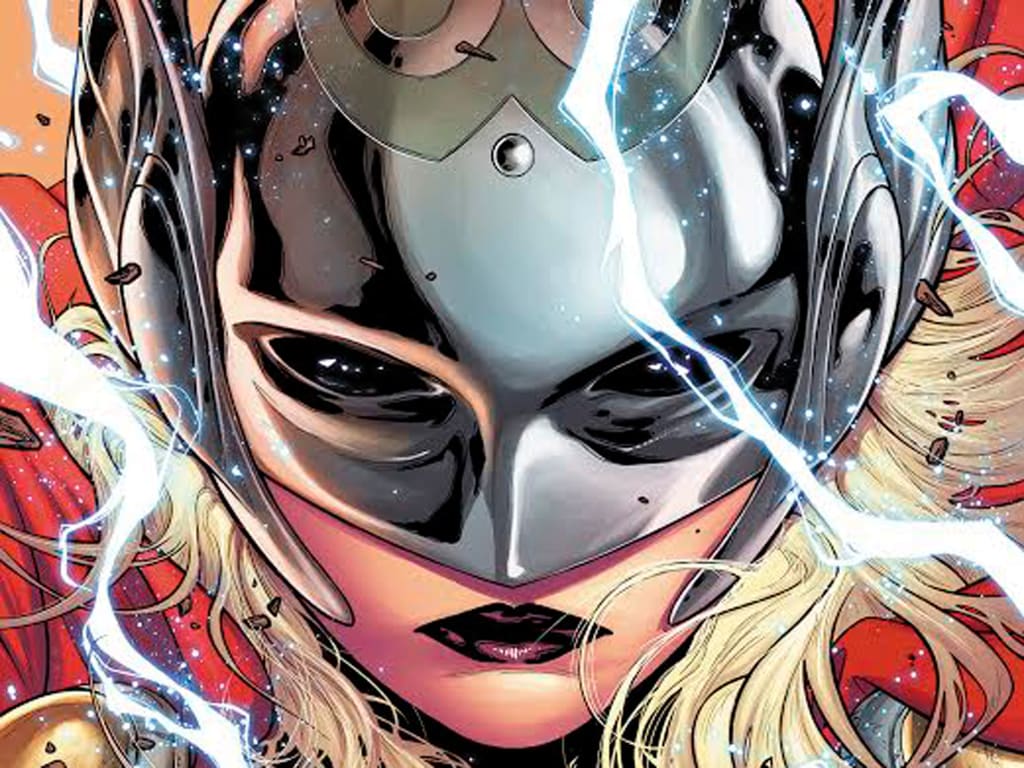
"Thwip!” I yelled, shooting a web at my sister while dodging her glowing lasso. Being on our trampoline made dodging her attacks much easier and plus made me look a lot more like Spiderman. Using another web to swing around her, I had a clear shot and fired. “Thwip!” Looking up, there lie my enemy, subdued by the sticky net. I was victorious!
Comics have always been a big aspect of who I am, and now being older, I look at them from the perspective of an adult. In the past two years, the nation has undergone some radical social changes. From the increase in female leads in the media to the recent legalization of same sex marriages, society is in the process of a major renovation. Comics have been undergoing these same changes, too.
Superheroes have been a staple for morals, values, and aspirations for readers of all ages. Some of the most well-known heroes have been reflecting these recent social changes in their lives as well.
Fans are drawn to the superhuman aspects, morals, and values of some of the characters.
Readers can easily relate to comics because even if the hero saves the day and defeats the bad guy, they come home to real-life problems. In an issue of Spiderman, Peter Parker comes home from taking a test in his college class, only to find that he had washed his Spider suit along with his white clothes, turning everything pink and blue.
Since the rise of the Black Lives Matter movement and the riots in Baltimore, the media has brought more attention to racism. In an issue of the Captain America comic last year, the hero Steve Rodgers, who is supposed to portray everything that America has been and continues to be has been robbed of his strength and vitality and must pass on his legacy to his partner in crime fighting, Sam Wilson, the Falcon.
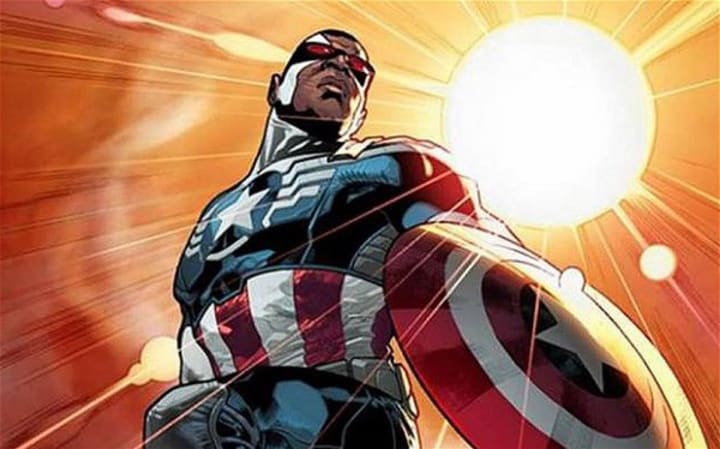
Sam Wilson as Captain America
This created a spark in the comic world because Wilson is an African American and the character of Captain America has never been portrayed in that way, which makes this change a huge step forward. Wilson is a character with a very different background. He didn’t grow up in the 1930s so he’s a modern man compared to Rodgers.
“You don’t want a comic book to be nostalgia driven. A comic in 2015 shouldn’t be reflecting 1975, 1985 or even 2005,” said Andrew Farago, curator for the Cartoon Art Museum in San Francisco.
The proliferation of female leads in the media has been prominent in comics recently. In an issue of Thor, a well-known hero from the movie The Avengers, he is unworthy to wield his mighty hammer for reasons unknown to the reader. His girlfriend, Jane Foster, is the one who is deemed worthy (also seen in the movie Thor).
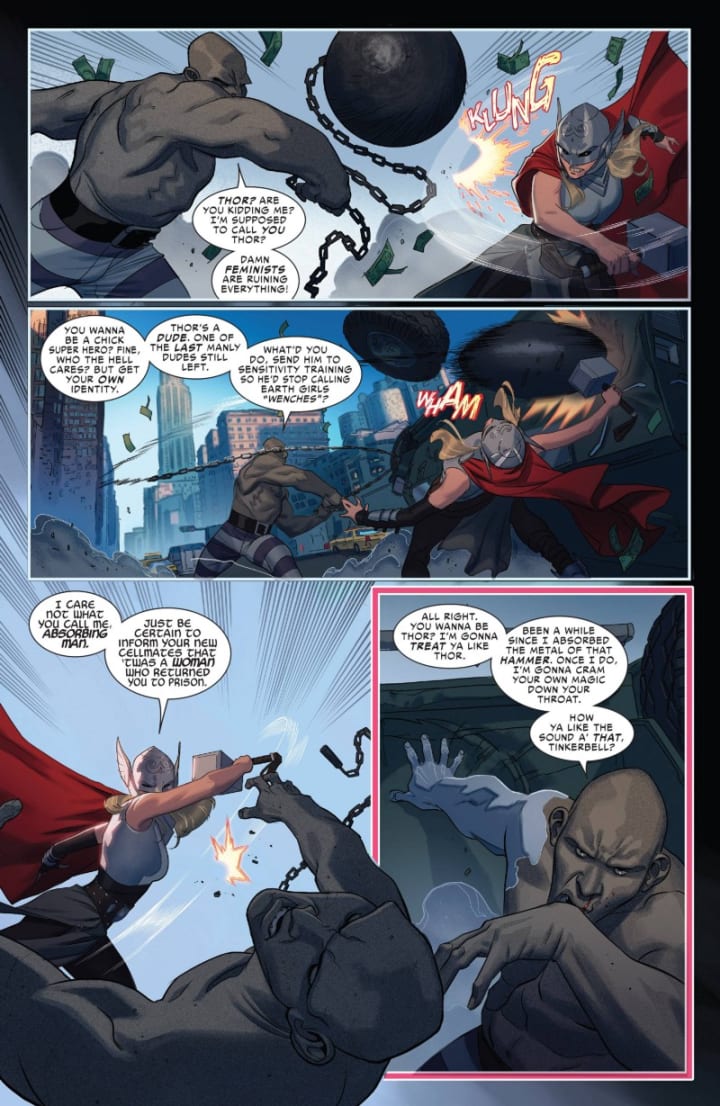
Jane Foster as Thor
In the past there have been plenty of female superheroes, but having a female replace a dominant male hero has never been seen. Farago made it very clear that this isn’t a She-Thor, Lady Thor, or Thorita.
“This is the actual hero of Thor and will be for an unknown period of time,” he said.
Having a woman take the hammer is especially symbolic because of how masculine the weapon has been in the past. Thor himself is a very masculine hero as well.
Comics have also taken on the issue of gay marriage. Iceman, Bobby Drake, has been a part of the X-Men team since the 60s and has been a main character in the comic. This year, a new issue revealed that Iceman is gay.
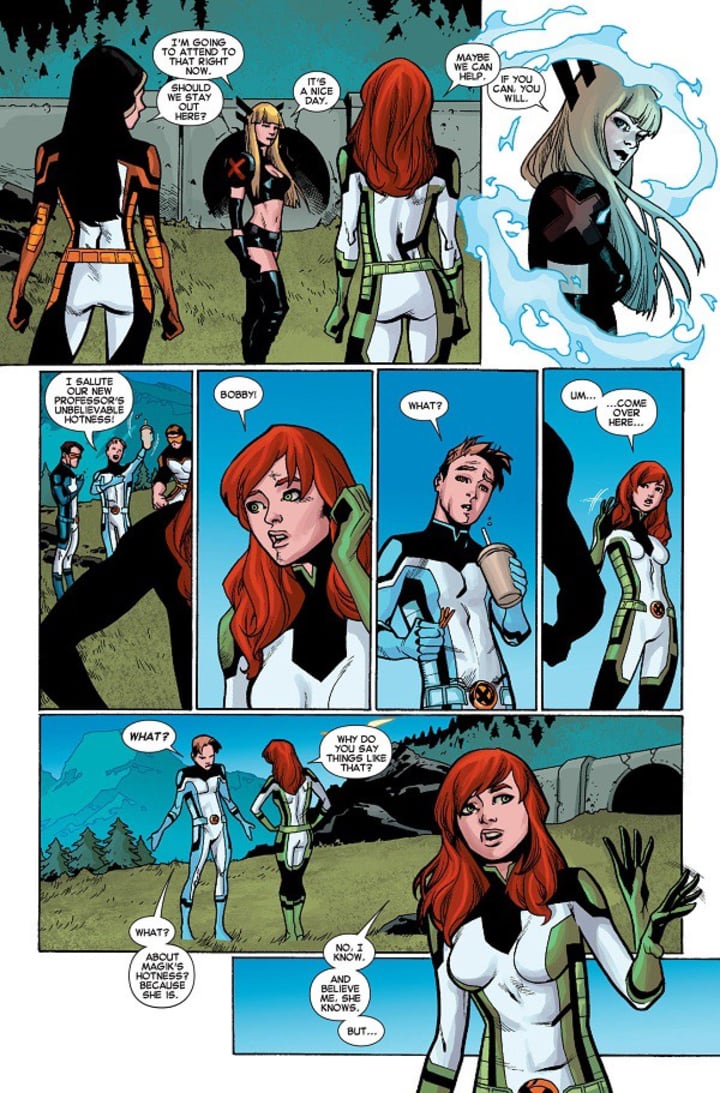
Page from recent Ice Man comic.
Having one of the X-Men mutants come out is symbolic because they have always fought the opinions of society and having this connects to legalization of same sex marriage. Bobby Drake now has two aspects of himself that he needs society to accept: being a mutant and being gay.
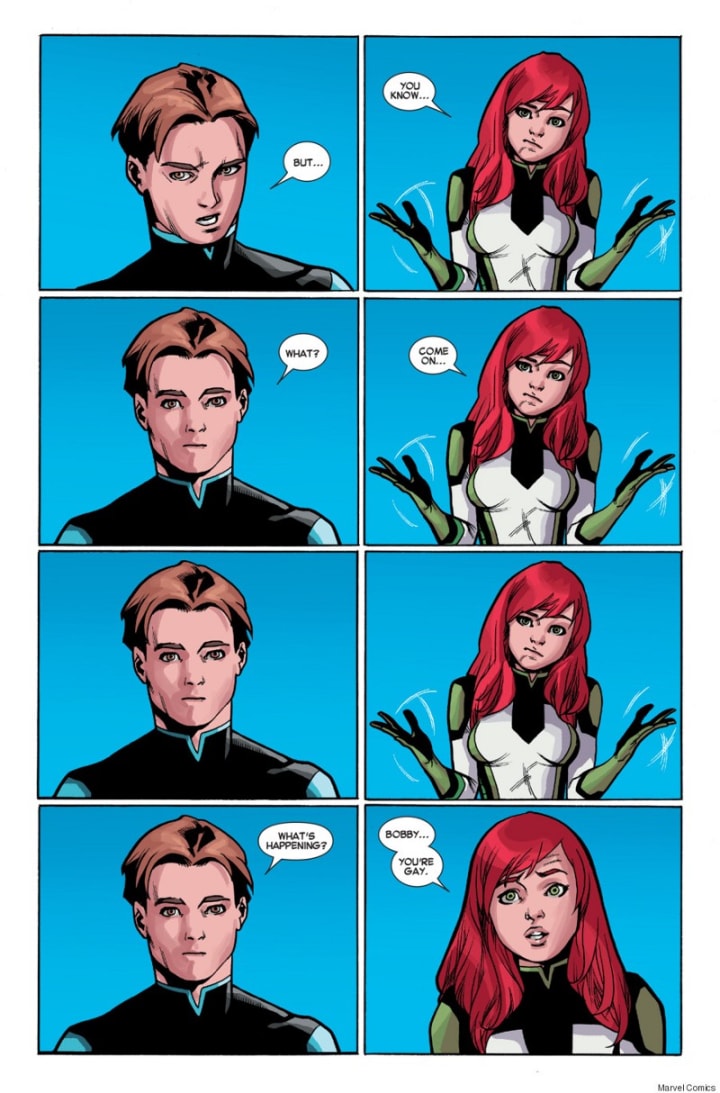
Page from recent Ice Man comic.
“Comics have been especially good at reflecting the problems that readers may be going through,” Farago said. Having a gay hero, and a well-known one at that, encourages the readers that yes, even superheroes can be gay.
“When I started reading comics in the 80s, it wasn’t unusual for the characters to go through changes. The original Captain America had been replaced by a younger, tougher superhero,” Farago said. “The point of that was to show that it’s not the costume nor the super powers that make the hero, but the person behind the costume that it is most important.”



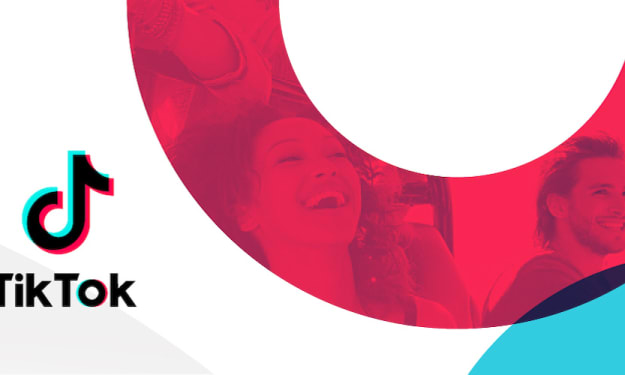


Comments
There are no comments for this story
Be the first to respond and start the conversation.